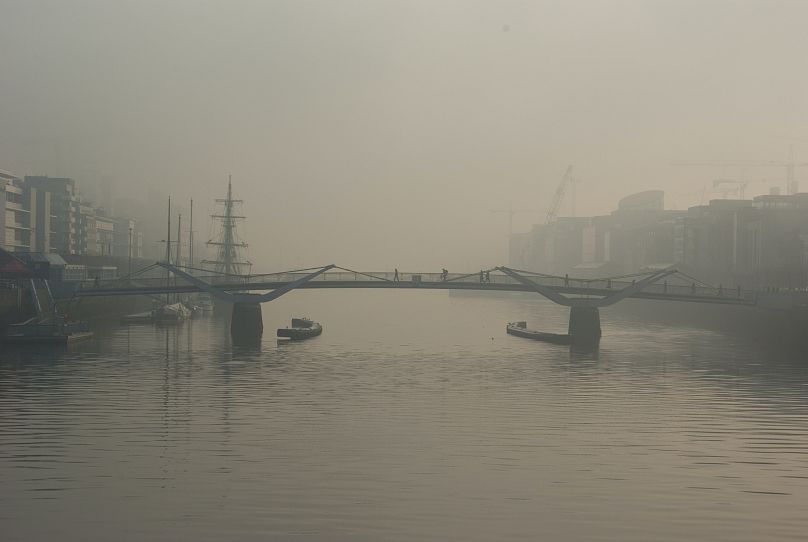The air quality forecast is especially important for people with asthma and heart conditions who are particularly vulnerable to pollution.
Ireland has launched a new service that will allow people to check air quality in their area.
The Environmental Protection Agency (EPA) has introduced the online forecast to help people plan their outdoor activities to “reduce potential exposure to poor air quality”.
The regulator also hopes it will raise public awareness of air pollution problems in local areas. While air pollution levels in the country have slowly started to come down, some urban centres like Letterkenny, Ennis and Enniscorthy are more frequently affected by poor air quality.
What do the new air pollution forecasts look like?
The air quality forecast will be updated twice daily - once at 9:30am and once at 5:30pm. It provides maps for predicted air quality for up to three days: today, tomorrow and the day after tomorrow.
A rating of 1 to 10 will be given with 10 meaning the air quality is very poor and a reading of 1 to 3 meaning it is good.
Each forecast at www.airquality.ie will also give daily concentrations of the three main air pollutants in Ireland: particulate matter (PM), nitrogen dioxide (NO2) and Ozone (O3).
Fine particulate matter (PM 2.5) or tiny pieces of soot, dust and other materials from burning solid fuel has been linked to strokes, cancer, lung disease and heart disease. Alongside nitrogen dioxide from burning fossil, the EPA says these are the two main pollutants impacting people’s health in the country.
Dr Micheál Lehane, director of the EPA’s Office of Radiation Protection & Environmental Monitoring says the forecast will “provide an important health and air quality resource for everyone”.
But especially, he adds, “for those of us who are particularly affected by poor air quality, including those suffering from respiratory disease and asthma”.
The regulator says that it will allow people to plan their activities in line with Air Quality Index for Health (AQIH) recommendations such as reducing physical activity when pollution levels are predicted to increase.
CEO of the Asthma Society of Ireland, Eilís Ní Chathnia welcomed the launch of the new tool.
"The air quality forecast will be an important resource for our members and everyone with respiratory conditions,” she said.
“Ireland has the highest incidence rate of asthma in Europe with one in ten children and one in thirteen adults developing the condition - with 890,000 people likely to develop asthma in their lifetimes.”
Why is information on air quality important?
Ireland has more than 100 different air quality monitoring stations across the country and the forecast fills in the gaps using computer models.
These models were developed under an EU project called Life Emerald which aims to ensure information on air quality is available to citizens and stakeholders to accelerate decisions aimed at tackling air quality issues.
“The forecast will also serve policymakers as a valuable tool for analysing air quality in Ireland,” Dr Lehane added.
How to check the air quality in your local area
Across Europe, more than 3,500 air quality monitoring stations track five key pollutants in individual countries, regions and cities. The European Air Quality Index, produced by the European Environment Agency, uses data reported by these countries and similar computer modelling to provide a map of air quality across the EU.
Its forecasts also reflect the potential impact of air quality on people’s health, including recommendations on when vulnerable populations should reduce or avoid physical activity outdoors.












